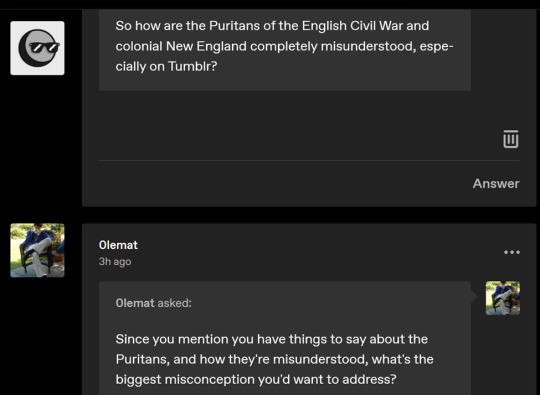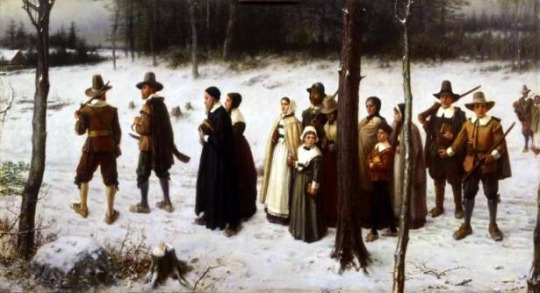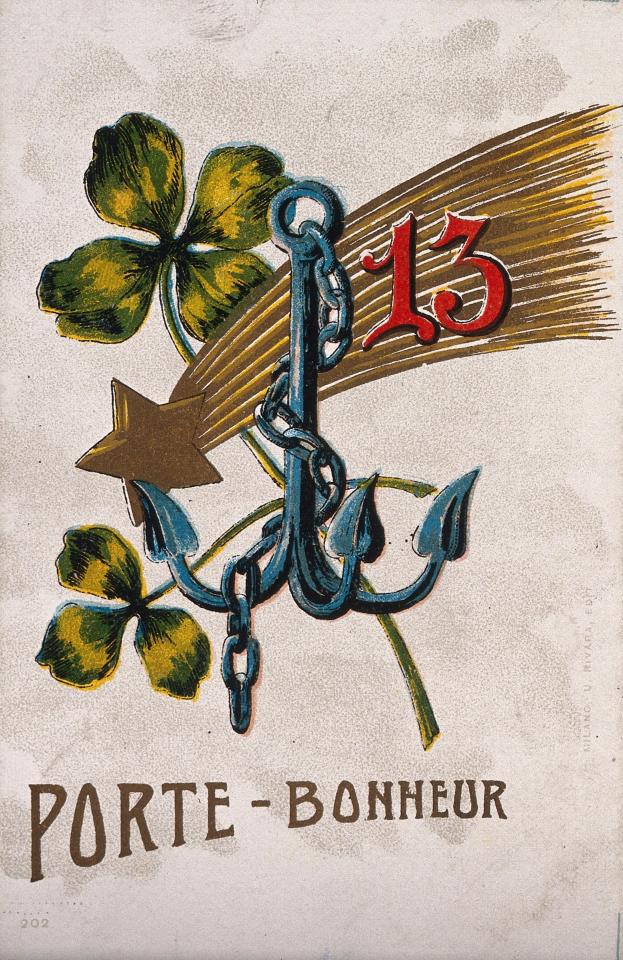#calvinism
Text
The real central tension of Puella Magi Madoka Magica is that Homura Akemi is a Catholic living in a world where Calvinism is demonstrably correct, but only for girls.
#media#cartoons#animation#anime#puella magi madoka magica#pmmm#homura akemi#religion#christianity#calvinism#gender#this is a serious post
2K notes
·
View notes
Text
You go back in time to kill John Calvin and just as you're about to make the final blow he smiles. "Oh, so you're punishing me for something I haven't done yet? Something that's, let us say, predetermined? Kill me if you want but I've already won." You pause just long enough for him to tackle you and grab your gun. God fucking damn it, not again
9K notes
·
View notes
Text
Why People Are Wrong About the Puritans of the English Civil War and New England





Oh well, if you all insist, I suppose I can write something.
(oh good, my subtle scheme is working...)

Introduction:
So the Puritans of the English Civil War is something I studied in graduate school and found endlessly fascinating in its rich cultural complexity, but it's also a subject that is popularly wildly misunderstood because it's caught in the jaws of a pair of distorted propagandistic images.
On the one hand, because the Puritans settled colonial New England, since the late 19th century they've been wrapped up with this nationalist narrative of American exceptionalism (that provides a handy excuse for schoolteachers to avoid talking about colonial Virginia and the centrality of slavery to the origins of the United States). If you went to public school in the United States, you're familiar with the old story: the United States was founded by a people fleeing religious persecution and seeking their freedom, who founded a society based on social contracts and the idea that in the New World they were building a city on a hill blah blah America is an exceptional and perfect country that's meant to be an example to the world, and in more conservative areas the whole idea that America was founded as an explicitly Christian country and society.
Then on the other hand, you have (and this is the kind of thing that you see a lot of on Tumblr) what I call the Matt Damon-in-Good-Will-Hunting, "I just read Zinn's People's History of the United States in U.S History 101 and I'm home for my first Thanksgiving since I left for colleg and I'm going to share My Opinions with Uncle Burt" approach. In this version, everything in the above nationalist narrative is revealed as a hideous lie: the Puritans are the source of everything wrong with American society, a bunch of evangelical fanatics who came to New England because they wanted to build a theocracy where they could oppress all other religions and they're the reason that abortion-banning, homophobic and transphobic evangelical Christians are running the country, they were all dour killjoys who were all hopelessly sexually repressed freaks who hated women, and the Salem Witch Trials were a thing, right?
And if anyone spares a thought to examine the role that Puritans played in the English Civil War, it basically short-hands to Oliver Cromwell is history's greatest monster, and didn't they ban Christmas?
Here's the thing, though: as I hope I've gotten across in my posts about Jan Hus, John Knox, and John Calvin, the era of the Reformation and the Wars of Religion that convulsed the Early Modern period were a time of very big personalities who were complicated and not very easy for modern audiences to understand, because of the somewhat oblique way that Early Modern people interpreted and really believed in the cultural politics of religious symbolism.
So what I want to do with this post is to bust a few myths and tease out some of the complications behind the actual history of the Puritans.
Did the Puritans Experience Religious Persecution?
Yes, but that wasn't the reason they came to New England, or at the very least the two periods were divided by some decades. To start at the beginning, Puritans were pretty much just straightforward Calvinists who wanted the Church of England to be a Calvinist Church. This was a fairly mainstream position within the Anglican Church, but the "hotter sort of Protestant" who started to organize into active groups during the reigns of Elizabeth and James I were particularly sensitive to religious symbolism they (like the Hussites) felt smacked of Catholicism and especially the idea of a hierarchy where clergy were a better class of person than the laity.
So for example, Puritans really first start to emerge during the Vestments Controversy in the reign of Edward VI where Bishop Hooper got very mad that Anglican priests were wearing the cope and surplice, which he thought were Catholic ritual garments that sought to enhance priestly status and that went against the simplicity of the early Christian Church. Likewise, during the run-up to the English Civil War, the Puritans were extremely sensitive to the installation of altar rails which separated the congregation from the altar - they considered this to be once again a veneration of the clergy, but also a symbolic affirmation of the Catholic doctrine of transubstantiation.
At the same time, they were not the only religious faction within the Anglican Church - and this is where the religious persecution thing kicks in, although it should be noted that this was a fairly brief but very emotionally intense period. Archbishop William Laud was a leading High Church Episcopalian who led a faction in the Church that would become known as Laudians, and he was just as intense about his religious views as the Puritans were about his. A favorite of Charles I and a first advocate of absolutist monarchy, Laud was appointed Archbishop of Canturbury in 1630 and acted quickly to impose religious uniformity of Laudian beliefs and practices - ultimately culminating in the disastrous decision to try imposing Episcopalianism on Scotland that set off the Bishop's Wars.
The Puritans were a special target of Laud's wrath: in addition to ordering the clergy to do various things offensive to Puritans that he used as a shibboleth to root out clergy with Puritan sympathies and fire them from their positions in the Church, he established official religious censors who went after Puritan writers like William Prynne for seditious libel and tortured them for their criticisms of his actions, cropping their ears and branding them with the letters SL on their faces. Bringing together the powers of Church and State, Laud used the Court of Star Chamber (a royal criminal court with no system of due process) to go after anyone who he viewed as having Puritan sympathies, imposing sentences of judicial torture along the way.
It was here that the Puritans began to make their first connections to the growing democratic movement in England that was forming in opposition to Charles I, when John Liliburne the founder of the Levellers was targeted by Laud for importing religious texts that criticized Laudianism - Laud had him repeatedly flogged for challenging the constitutionality of the Star Chamber court, and "freeborn John" became a martyr-hero to the Puritans.
When the Long Parliament met in 1640, Puritans were elected in huge numbers, motivated as they were by a combination of resistance to the absolutist monarchism of Charles I and the religious policies of Archbishop Laud - who Parliament was able to impeach and imprison in the Tower of the London in 1641.
This relatively brief period of official persecution that powerfully shaped the Puritan mindset was nevertheless disconnected from the phenomena of migration to New England - which had started a decade before Laud became Archbishop of Canterbury and continued decades after his impeachment.
The Puritans Just Wanted to Oppress Everyone Else's Religion:
This is the very short-hand Howard Zinn-esque critique we often see of the Puritan project in the discourse, and while there is a grain of truth to it - in the Massachusetts Bay Colony, the Congregational Church was the official state religion, no other church could be established without permission from the Congregational Church, all residents were required to pay taxes to support the Congregational Church, and only Puritans could vote. Moreover, there were several infamous incidents where the Puritan establishment put Anne Hutchinson on trial and banished her, expelled Roger Williams, and hanged Quakers.
Here's the thing, though: during the Early Modern period, every single side of every single religious conflict wanted to establish religious uniformity and oppress the heretics: the Catholics did it to the Protestants where they could mobilize the power of the Holy Roman Emperor against the Protestant Princes, the Protestants did it right back to the Catholics when Gustavus Adolphus' armies rolled through town, the Lutherans and the Catholics did it to the Calvinists, and everybody did it to the Anabaptists.
That New England was founded as a Calvinist colony is pretty unremarkable, in the final analysis. (By the by, both Hutchinson and Williams were devout if schismatic Puritans who were firmly of the belief that the Anglican Church was a false church.) What's more interesting is how quickly the whole religious project broke down and evolved into something completely different.
Essentially, New England became a bunch of little religious communes that were all tax-funded, which is even more the case because the Congregationalist Church was a "gathered church" where the full members of the Church (who were the only people allowed to vote on matters involving the church, and were the only ones who were allowed to be given baptism and Communion, which had all kinds of knock-on effects on important social practices like marriages and burials) and were made up of people who had experienced a conversion where they can gained an assurance of salvation that they were definitely of the Elect. You became a full member by publicly sharing your story of conversion (which had a certain cultural schema of steps that were supposed to be followed) and having the other full members accept it as genuine.
This is a system that works really well to bind together a bunch of people living in a commune in the wilderness into a tight-knit community, but it broke down almost immediately in the next generation, leading to a crisis called the Half-Way Covenant.
The problem was that the second generation of Puritans - all men and women who had been baptized and raised in the Congrgeationalist Church - weren't becoming converted. Either they never had the religious awakening that their parents had had, or their narratives weren't accepted as genuine by the first generation of commune members. This meant that they couldn't hold church office or vote, and more crucially it meant that they couldn't receive the sacrament or have their own children baptized.
This seemed to suggest that, within a generation, the Congregationalist Church would essentially define itself into non-existence and between the 1640s and 1650s leading ministers recommended that each congregation (which was supposed to decide on policy questions on a local basis, remember) adopt a policy whereby the children of baptized but unconverted members could be baptized as long as they did a ceremony where they affirmed the church covenant. This proved hugely controversial and ministers and laypeople alike started publishing pamphlets, and voting in opposing directions, and un-electing ministers who decided in the wrong direction, and ultimately it kind of broke the authority of the Congregationalist Church and led to its eventual dis-establishment.
The Puritans are the Reason America is So Evangelical:
This is another area where there's a grain of truth, but ultimately the real history is way more complicated.
Almost immediately from the founding of the colony, the Puritans begin to undergo mutation from their European counterparts - to begin with, while English Puritans were Calvinists and thus believed in a Presbyterian form of church government (indeed, a faction of Puritans during the English Civil War would attempt to impose a Presbyterian Church on England.), New England Puritans almost immediately adopted a congregationalist system where each town's faithful would sign a local religious constitution, elect their own ministers, and decide on local governance issues at town meetings.
Essentially, New England became a bunch of little religious communes that were all tax-funded, which is even more the case because the Congregationalist Church was a "gathered church" where the full members of the Church (who were the only people allowed to vote on matters involving the church, and were the only ones who were allowed to be given baptism and Communion, which had all kinds of knock-on effects on important social practices like marriages and burials) and were made up of people who had experienced a conversion where they can gained an assurance of salvation that they were definitely of the Elect. You became a full member by publicly sharing your story of conversion (which had a certain cultural schema of steps that were supposed to be followed) and having the other full members accept it as genuine.
This is a system that works really well to bind together a bunch of people living in a commune in the wilderness into a tight-knit community, but it broke down almost immediately in the next generation, leading to a crisis called the Half-Way Covenant.
The problem was that the second generation of Puritans - all men and women who had been baptized and raised in the Congrgeationalist Church - weren't becoming converted. Either they never had the religious awakening that their parents had had, or their narratives weren't accepted as genuine by the first generation of commune members. This meant that they couldn't hold church office or vote, and more crucially it meant that they couldn't receive the sacrament or have their own children baptized.
This seemed to suggest that, within a generation, the Congregationalist Church would essentially define itself into non-existence and between the 1640s and 1650s leading ministers recommended that each congregation (which was supposed to decide on policy questions on a local basis, remember) adopt a policy whereby the children of baptized but unconverted members could be baptized as long as they did a ceremony where they affirmed the church covenant. This proved hugely controversial and ministers and laypeople alike started publishing pamphlets, and voting in opposing directions, and un-electing ministers who decided in the wrong direction, and accusing one another of being witches. (More on that in a bit.)
And then the Great Awakening - which to be fair, was a major evangelical effort by the Puritan Congregationalist Church, so it's not like there's no link between evangelical - which was supposed to promote Congregational piety ended up dividing the Church and pretty soon the Congregationalist Church is dis-established and it's safe to be a Quaker or even a Catholic on the streets of Boston.
But here's the thing - if we look at which denominations in the United States can draw a direct line from themselves to the Congregationalist Church of the Puritans, it's the modern Congregationalists who are entirely mainstream Protestants whose churches are pretty solidly liberal in their politics, the United Church of Christ which is extremely cultural liberal, and it's the Unitarian Universalists who are practically issued DSA memberships. (I say this with love as a fellow comrade.)
By contrast, modern evangelical Christianity (although there's a complicated distinction between evangelical and fundamentalist that I don't have time to get into) in the United States is made up of an entirely different set of denominations - here, we're talking Baptists, Pentacostalists, Methodists, non-denominational churches, and sometimes Presbyterians.
The Puritans Were Dour Killjoys Who Hated Sex:
This one owes a lot to Nathaniel Hawthorne's Scarlet Letter.
The reality is actually the opposite - for their time, the Puritans were a bunch of weird hippies. At a time when most major religious institutions tended to emphasize the sinful nature of sex and Catholicism in particular tended to emphasize the moral superiority of virginity, the Puritans stressed that sexual pleasure was a gift from God, that married couples had an obligation to not just have children but to get each other off, and both men and women could be taken to court and fined for failing to fulfill their maritial obligations.
The Puritans also didn't have much of a problem with pre-marital sex. As long as there was an absolute agreement that you were going to get married if and when someone ended up pregnant, Puritan elders were perfectly happy to let young people be young people. Indeed, despite the objection of Jonathan Edwards and others there was an (oddly similar to modern Scandinavian customs) old New England custom of "bundling," whereby a young couple would be put into bed together by their parents with a sack or bundle tied between them as a putative modesty shield, but where everyone involved knew that the young couple would remove the bundle as soon as the lights were turned out.
One of my favorite little social circumlocutions is that there was a custom of pretending that a child clearly born out of wedlock was actually just born prematurely to a bride who was clearly nine months along, leading to a rash of surprisingly large and healthy premature births being recorded in the diary of Puritan midwife Martha Ballard. Historians have even applied statistical modeling to show that about 30-40% of births in colonial America were pre-mature.
But what about non-sexual dourness? Well, here we have to understand that, while they were concerned about public morality, the Puritans were simultaneously very strict when it came to matters of religion and otherwise normal people who liked having fun. So if you go down the long list of things that Puritans banned that has landed them with a reputation as a bunch of killjoys, they usually hide some sort of religious motivation.
So for example, let's take the Puritan iconoclastic tendency to smash stained glass windows, whitewash church walls, and smash church organs during the English Civil War - all of these things have to do with a rejection of Catholicism, and in the case of church organs a belief that the only kind of music that should be allowed in church is the congregation singing psalms as an expression of social equality. At the same time, Puritans enjoyed art in a secular context and often had portraits of themselves made and paintings hung on their walls, and they owned musical instruments in their homes.
What about the wearing nothing but black clothing? See, in our time wearing nothing but black is considered rather staid (or Goth), but in the Early Modern period the dyes that were needed to produce pure black cloth were incredibly expensive - so wearing all black was a sign of status and wealth, hence why the Hapsburgs started emphasizing wearing all-black in the same period. However, your ordinary Puritan couldn't afford an all-black attire and would have worn quite colorful (but much cheaper) browns and blues and greens.
What about booze and gambling and sports and the theater and other sinful pursuits? Well, the Puritans were mostly ok with booze - every New England village had its tavern - but they did regulate how much they could serve, again because they were worried that drunkenness would lead to blasphemy. Likewise, the Puritans were mostly ok with gambling, and they didn't mind people playing sports - except that they went absolutely beserk about drinking, gambling, and sports if they happened on the Sabbath because the Puritans really cared about the Sabbath and Charles I had a habit of poking them about that issue. They were against the theater because of its association with prostitution and cross-dressing, though, I can't deny that. On the other hand, the Puritans were also morally opposed to bloodsports like bear-baiting, cock-fighting, and bare-knuckle boxing because of the violence it did to God's creatures, which I guess makes them some of the first animal rights activsts?
They Banned Christmas:
Again, this comes down to a religious thing, not a hatred of presents and trees - keep in mind that the whole presents-and-trees paradigm of Christmas didn't really exist until the 19th century and Dickens' Christmas Carol, so what we're really talking about here is a conflict over religious holidays - so what people were complaining about was not going to church an extra day in the year. I don't get it, personally.
See, the thing is that Puritans were known for being extremely close Bible readers, and one of the things that you discover almost immediately if you even cursorily read the New Testament is that Christ was clearly not born on December 25th. Which meant that the whole December 25th thing was a false religious holiday, which is why they banned it.
The Puritans Were Democrats:
One thing that I don't think Puritans get enough credit for is that, at a time when pretty much the whole of European society was some form of monarchist, the Puritans were some of the few people out there who really committed themselves to democratic principles.
As I've already said, this process starts when John Liliburne, an activist and pamphleteer who promoted the concept of universal human rights (what he called "freeborn rights"), took up the anti-Laudian cause and it continued through the mobilization of large numbers of Puritans to campaign for election to the Long Parliament.
There, not only did the Puritans vote to revenge themselves on their old enemy William Laud, but they also took part in a gradual process of Parliamentary radicalization, starting with the impeachment of Strafford as the architect of arbitrary rule, the passage of the Triennal Acts, the re-statement that non-Parliamentary taxation was illegal, the Grand Remonstrance, and the Militia Ordinance.
Then over the course of the war, Puritans served with distinction in the Parliamentary army, especially and disproportionately in the New Model Army where they beat the living hell out of the aristocratic armies of Charles I, while defying both the expectations and active interference of the House of Lords.
At this point, I should mention that during this period the Puritans divided into two main factions - Presbyterians, who developed a close political and religious alliance with the Scottish Covenanters who had secured the Presbyterian Church in Scotland during the Bishops' Wars and who were quite interested in extending an established Presbyterian Church; and Independents, who advocated local congregationalism (sound familiar) and opposed the concept of established churches.
Finally, we have the coming together of the Independents of the New Model Army and the Leveller movement - during the war, John Liliburne had served with bravery and distinction at Edgehill and Marston Moore, and personally capturing Tickhill Castle without firing a shot. His fellow Leveller Thomas Rainsborough proved a decisive cavalry commander at Naseby, Leicester, the Western Campaign, and Langport, a gifted siege commander at Bridgwater, Bristol, Berkeley Castle, Oxford, and Worcester.
Thus, when it came time to hold the Putney Debates, the Independent/Leveller bloc had both credibility within the New Model Army and the only political program out there. Their proposal:
redistricting of Parliament on the basis of equal population; i.e one man, one vote.
the election of a Parliament every two years.
freedom of conscience.
equality under the law.
In the context of the 17th century, this was dangerously radical stuff and it prompted Cromwell and Fairfax into paroxyms of fear that the propertied were in danger of being swamped by democratic enthusiasm - leading to the imprisonment of Lilburne and the other Leveller leaders and ultimately the violent suppression of the Leveller rank-and-file.
As for Cromwell, well - even the Quakers produced Richard Nixon.
#history#puritans#calvinism#english civil war#oliver cromwell#the stupid meme about christmas#new england#protestantism
422 notes
·
View notes
Photo

Calvinists in the Kingdom of Hungary, 1900.
During the late 19th and early 20th centuries, Calvinism had a significant presence in Hungary, particularly among ethnic Hungarian communities.
Here are some key points about Calvinists in Hungary around 1900:
Historical Context: Hungary, at the turn of the 20th century, was part of the Austro-Hungarian Empire. Calvinism had a long history in the region, dating back to the Reformation in the 16th century when it spread across Europe.
Religious Minority: Calvinists were a religious minority in Hungary, alongside Catholics and other Protestant denominations. Despite being a minority, they often held significant influence in certain regions, particularly in Transylvania.
Transylvanian Calvinism: Transylvania, which was part of Hungary at the time, had a strong Calvinist presence. The Edict of Torda in 1568 granted religious freedom to Calvinists and other religious minorities in Transylvania, making it a haven for Protestantism in Eastern Europe.
Education and Culture: Calvinists in Hungary placed a strong emphasis on education and literacy. They established schools and colleges to educate their communities, contributing to the development of Hungarian culture and intellectual life.
Political Influence: Calvinists, like other religious groups, played a role in Hungarian politics. They were often involved in movements advocating for greater autonomy or rights for ethnic Hungarians within the Austro-Hungarian Empire.
Social Impact: Calvinist communities in Hungary were often tightly knit, with strong social bonds within their congregations. They participated in various social and charitable activities to support their members and the wider community.
Cultural Contributions: Calvinists contributed to Hungarian literature, music, and arts. Many prominent Hungarian intellectuals and cultural figures came from Calvinist backgrounds.
by hunmapper
59 notes
·
View notes
Text
My latest newsletter is about the attempts to evict Bluestockings, and the new laws that require maximum cruelty towards unhoused people. And I talk about why we want to judge unhoused people for their behavior, and how it's part of our American disease.
#homelessness#unhoused#houselessness#cities#politics#cruelty#capitalism#calvinism#religion#protestant work ethic
76 notes
·
View notes
Link
From the essay:
The worldview of U.S. Conservatism has its roots in Calvinism. Its dualism is a mirror of Calvinism’s dualism. We decidedly see this in religious Fundamentalism, where Calvinist doctrines have been the core dogma of the “religious right” for centuries. Part of the legacy of Calvinism is an ideology in which those of different ethnicity or creed are placed under the classification of evil. Those considered different are vilified and marginalized. Foreigners are the enemy, especially if they are non-white. Non-whites, even though they are Americans, are considered lesser members of society. That black people are cursed by God has been a long-held conception, especially for the Mormons.
The Calvinist dualistic worldview has spilled over into secular America. A corollary to this conception of evil is that attempts to help the disadvantaged in society is actually not just a waste of time but morally wrong. In essence, it is aiding evil. The poor are poor because they deserve to be poor because of their sinful nature.
252 notes
·
View notes
Text

Feeling superstitious this Friday the 13th?
Superstitions, magic, and witchcraft have deep historical roots, spanning across cultures and civilizations. Rooted in the human quest to understand and control the mysterious forces of the world, these practices often involve rituals, symbols, and beliefs that go beyond the realm of empirical evidence.
Superstitions are often cultural traditions or irrational beliefs, while magic encompasses rituals and spells believed to harness supernatural powers. Witchcraft, historically associated with individuals, often women, who were thought to possess magical abilities, has a darker side marked by persecutions. The infamous witch trials, such as the European witch hunts of the 15th to 18th centuries, resulted in the persecution and execution of thousands.
Fear of the supernatural, religious fervor, and social tensions contributed to these dark chapters in history, underscoring the dangers of unchecked superstition and the persecution of those labeled as practitioners of magic or witchcraft.
Learn more on JSTOR in "Superstitions, Magic, and Witchcraft," an open access chapter from The Consistory and Social Discipline in Calvin's Geneva.
Image credit: A Postcard Wishing Good Luck Illustrated by Various Lucky Charms. Chromolithograph. From the Wellcome Collection on JSTOR.
#jstor#research#academic research#superstition#magic#witchcraft#calvinism#supernatural#witch hunts#good luck#friday the 13th#occult#folklore
125 notes
·
View notes
Text
"Glory follows afflictions, not as the day follows the night but as the spring follows the winter; for the winter prepares the earth for the spring, so do afflictions sanctified prepare the soul for glory."
-Richard Sibbes
61 notes
·
View notes
Text
On the Subject of Susan
I'm going to be a little blunt and my words may seem antagonistic here. But no hate, please. I'm just trying to analyze and provide my analysis based on the very simple facts. Now.
I've never quite understood the anger at C. S. Lewis for how he ended Susan's tale. Mainly, I suppose, because I had the whole story.
Everyone gets angry that Susan is "banned from Narnia" because she likes lipstick and nylon stockings and being a teenage girl in the 1940s, but no one seems to understand that that's not quite how it went, much less that Susan still has a chance.
Let me work backwards a moment and explain the latter. You see, to quote Lewis himself, in a letter to a girl called Marcela in 1955,
"...Haven’t you noticed in the two you have read that she is rather fond of being too grownup? I am sorry to say that side of her got stronger and she forgot about Narnia... ...She is left alive in this world at the end, having been turned into a rather silly, conceited young woman. But there is plenty of time for her to mend, and perhaps she will get to Aslan’s country in the end—in her own way. I think that whatever she had seen in Narnia she could (if she was the sort that wanted to) persuade herself, as she grew up, that it was ‘all nonsense’”
Now, there's a lot to unpack here, but first and foremost, my point is quite simple. "Perhaps she will get to Aslan's country in the end-in her own way." It was always meant to be open ended, for Susan. Narnia is not forever closed to her, unless you and she choose so.
"But Peace!" I can hear you saying, "There's that whole 'too fond of being grownup' phrase!" Why yes, yes there is, how clever of you to notice. The whole point of the latter portion of Susan's arc is that she chose that- lipstick and nylons and "being grownup"- over Narnia. She grew and she chose to forget Narnia.
After all, what sort of modern teenage girl (in England, during WW2) would be so interested in medieval times and what they probably explained to their friends to be a good old game of pretend? No, no, she can't remember Narnia right now - she's going to the cinema with a few girl friends, she's going to a party, she's focusing on everything but there and inevitably, after pushing it away for so long, Narnia let her be.
You see, C. S. Lewis was a very Arminian (and yes, I spelled it correctly) Christian theologian. And while I'm sure most of you here on this hellsite would like to ignore that, it is relevant to how Lewis wrote his fiction. After all, it's at the core of his basic beliefs, despite his being a staunch atheist in college and into his adulthood, and despite what you may like to think, it crept into his writing even when he did not intend it. For example, The Lion, the Witch, and the Wardrobe is called an allegory for the story of the Resurrection, despite Lewis' arguments to the contrary. He insisted that it be seen as what it is, very heavy symbolism. Very heavily used Christian symbolism, that is all over the Chronicles whether you like it or not.
Let me explain why this is relevant to Susan, what Arminianism even is, and how that term applies here. Susan is, so to speak, a symbol of an atheist left behind, after all of the Christians she called family died. In a situation where you regard Christianity as true, she is left on Earth while they have gone on to heaven. And this doesn't mean that the gates of heaven are closed to her, quite to the contrary! They would be closed on the day she died insisting that Jesus Christ was not Lord, plain and simple. She has a choice to make, so long as she is alive.
Now, to Calvinist theologians and Christians, Susan never had a choice. Either Aslan, the God symbol here, chose to bring her in, or he didn't. Calvinists believe in a thing called predestination, the concept that every believer that would ever be brought to heaven is chosen specifically by God. Arminianism declares the opposite. It's a whole thing in Christian theological circles, but that's irrelevant to this discussion. In any case, the core of Arminianism is that you and I have a choice in whether or not we believe in God, and in whether or not we go to heaven.
To an Arminian theologian, God, or Aslan in this symbolic case, can influence our choice, Susan's choice, up to a point. Once we reach that point, once Susan forgets, God, or Aslan, steps back. He accepts our choice, allows Susan to forget. It's up to us, up to Susan after that.
Lewis was an Arminian theologian. He made the point, repeatedly, in his theological works, about people having a choice.
He repeats that point with Susan.
One last thing, before you go. You see, there was another letter about Susan, after The Last Battle was released. He'd been asked if he ever intended to finish Susan's story.
This was his answer.
“I could not write that story myself. Not that I have no hope of Susan’s ever getting to Aslan’s country; but because I have a feeling that the story of her journey would be longer and more like a grown-up novel than I wanted to write. But I may be mistaken. Why not try it yourself?”
Well, my people? Now that you've heard what I had to say (and say through quite the essay, my apologies), why not? Go, do what you do and tell her story for yourself. The author has encouraged fanfiction, so go on! And don't worry about Christianity and symbolism too much. It may help you understand how and why Lewis wrote what he did, but unless you're determined to have your tale in his style and overlapping seamlessly with canon, it's unnecessary. Unless you choose to make it a part of your life, you don't have to be concerned about it.
Feel free to ask questions, and I'll answer to the best of my ability, with Google by my side!
Also, I nearly forgot. There are absolutely other problems with Susan being the last of her family, left alone in the aftermath of WW2. This is not the place to talk about those, however, merely to help you understand why she "is no longer a friend of Narnia" and to remind you that there's always hope.
Oh, and besides that, don't forget that I'm talking about the books and not the movies thank you very much, while The Lion, the Witch, and the Wardrobe was absolutely perfect to canon the other two were not and I'm not going to consider them in this post. I do appreciate them, but when dealing with book canon they're both nos.
#susan pevensie#the chronicles of narnia#the problem of susan#narnia#narnia susan#well this wasn't my plan for 3 am but here we are#arminianism#calvinism#my theology is very arminian leaning#but i tried to depict the two sides fairly#or as fairly as i can at 2 in the morning#if you want to know#im arminian with a touch of predestination#i believe that you get a choice#but also that sometimes#like with paul#god will smack you upside the face with undeniable proof of his existence#even then denial is an option#just not denial of his existence anymore more denial of his sovereignty
55 notes
·
View notes
Text
“I think Calvinism has been a greater curse than leprosy.”
— G.K. Chesterton
58 notes
·
View notes
Text
If you'd like, put in the tags your denomination.
#calvinism#christianity#christian#bible#jesus#calvinist#catholicism#catholic#god#scripture#arminianism
254 notes
·
View notes




